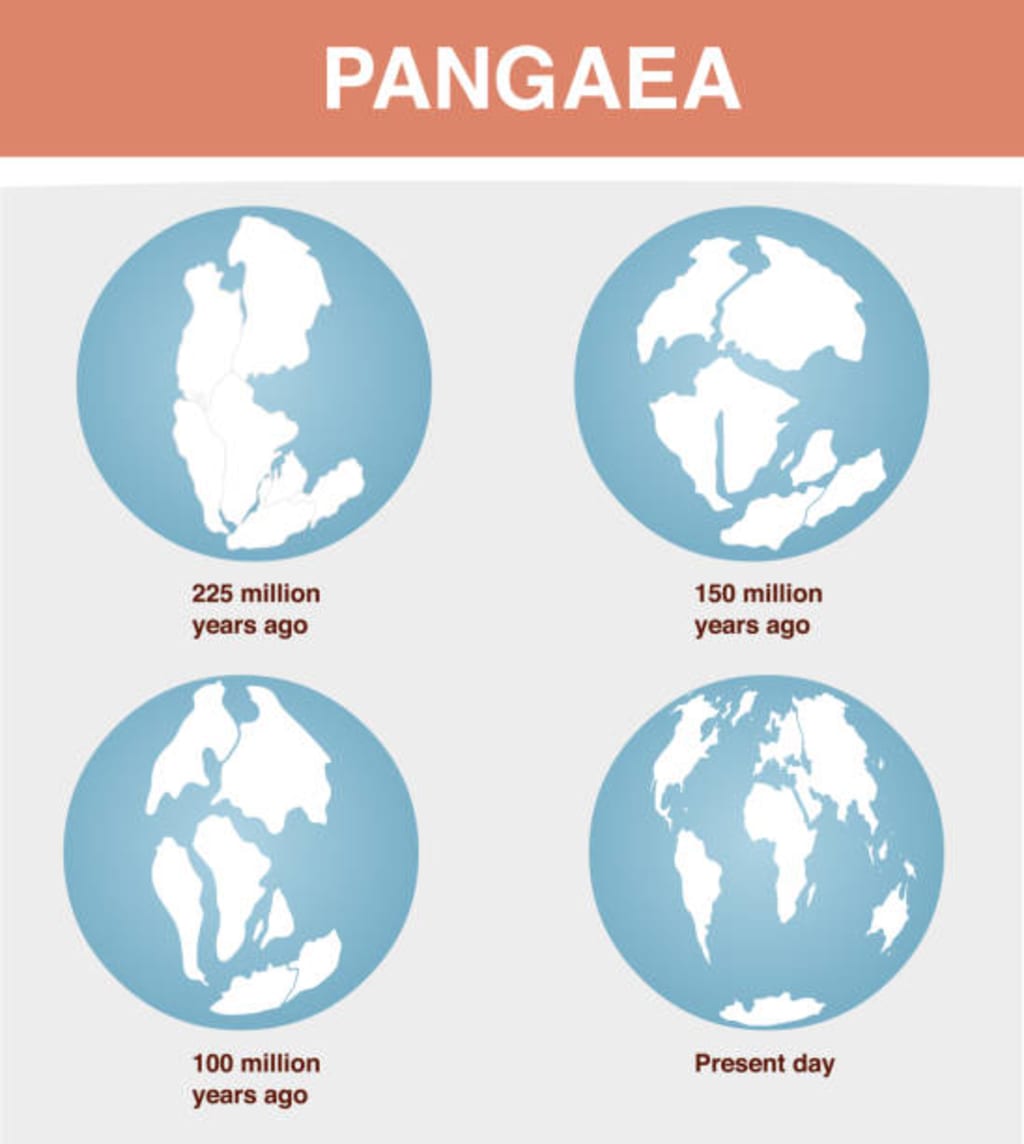
Introduction:
The Earth beneath our feet is in constant motion, albeit imperceptible to our daily lives. The groundbreaking theory of plate tectonics and continental drift revolutionized our understanding of the planet's geological dynamics. This comprehensive exploration aims to unearth the intricate mechanisms behind Earth's ever-changing landscapes, tracing the evolution of continents and unveiling the profound impact of plate tectonics on our planet's geology and life itself.
Understanding Plate Tectonics:
The concept of plate tectonics emerged from the pioneering work of scientists who observed evidence supporting the movement of Earth's continents. Alfred Wegener, in the early 20th century, proposed the theory of continental drift, suggesting that continents were once part of a single supercontinent called Pangaea, which gradually drifted apart over millions of years.
This theory gained credibility when evidence such as matching geological formations, fossils, and the fit of continents like puzzle pieces supported the idea of continental movement. However, it wasn't until the mid-20th century, with advancements in technology and the discovery of mid-ocean ridges, that the theory of plate tectonics solidified.
The Mechanics of Plate Tectonics:
Plate tectonics describe the Earth's lithosphere divided into large, rigid plates that float and move atop the semi-fluid asthenosphere beneath them. These plates—comprising oceanic and continental crust—interact at their boundaries, giving rise to various geological phenomena.
There are three primary types of plate boundaries: divergent, convergent, and transform. Divergent boundaries occur where plates move away from each other, creating mid-ocean ridges and rift valleys. Convergent boundaries form when plates collide, leading to subduction zones, mountain ranges, and volcanic arcs. Transform boundaries involve plates sliding past each other, causing earthquakes along faults like the San Andreas Fault in California.
Impact on Continents and Geological Features:
The movement of tectonic plates has sculpted Earth's surface, shaping continents, oceans, and mountain ranges over millions of years. The process of seafloor spreading and subduction at plate boundaries continuously reshapes coastlines and creates new land formations.
Mountain ranges like the Himalayas and the Andes are a testament to the collision of tectonic plates, while features like the Mid-Atlantic Ridge illustrate the divergence of plates. Volcanoes, earthquakes, and the formation of island chains are direct results of plate tectonics, showcasing the immense power and volatility beneath the Earth's surface.
Continued Evolution and Human Impact:
Plate tectonics continue to influence Earth's evolution, with ongoing processes shaping the planet's future landscapes. Understanding these mechanisms aids in predicting geological hazards such as earthquakes, volcanic eruptions, and tsunamis, allowing for better disaster preparedness and mitigation strategies.
Moreover, plate tectonics have influenced the distribution of resources like minerals, fossil fuels, and groundwater. They also impact climate patterns through their influence on ocean currents and land formations.
The Wilson Cycle and Supercontinents:
The Earth's crust is in a continuous cycle of fragmentation and amalgamation known as the Wilson Cycle. It describes the process of supercontinent formation, breakup, and subsequent reformation over millions of years. For instance, Pangaea was a supercontinent that existed around 300 million years ago before gradually breaking apart to form the continents we recognize today.
Hotspots and Mantle Plumes:
Apart from plate boundaries, hotspots are regions where molten rock, or magma, rises from deep within the Earth's mantle to the surface. These hotspots create volcanic activity, forming chains of volcanic islands or features like Hawaii and Yellowstone. Hotspots are stationary, and as tectonic plates move over them, they leave a trail of volcanic islands, providing evidence of plate movement.
Rifting and New Ocean Basins:
The process of rifting occurs when tectonic plates move apart, creating gaps in the Earth's crust. Over time, these rifts can evolve into new ocean basins. The East African Rift System is an example of an active rift where the African Plate is slowly splitting apart, potentially leading to the formation of a new ocean in millions of years.
Paleomagnetism and Seafloor Spreading:
The discovery of paleomagnetism, the study of ancient magnetic fields preserved in rocks, provided compelling evidence for seafloor spreading. Magnetic stripes parallel to mid-ocean ridges showcase alternating patterns of normal and reversed polarity in the ocean floor, supporting the idea of seafloor spreading and the continuous creation of new crust at these ridges.
Continental Collisions and Oogenesis:
When tectonic plates converge and collide, the intense pressure and folding lead to the formation of mountain ranges through a process known as oogenesis. The collision between the Indian Plate and the Eurasian Plate resulted in the Himalayas, while the collision of the African and Eurasian Plates formed the Alps.
Implications for Climate and Evolution:
Plate tectonics have had a profound impact on Earth's climate and the evolution of life. The movement of continents affected ocean currents, altering climate patterns and impacting global temperatures. Additionally, continental drift led to the isolation and subsequent diversification of species, contributing to the evolution of life on Earth.
Understanding these intricate processes and their far-reaching effects allows us to appreciate the dynamic nature of Earth's geology. Plate tectonics continue to shape our planet's landscapes, influence climate patterns, and provide insights into the evolution of life on Earth.
Conclusion:
The theory of plate tectonics and continental drift has transformed our perception of Earth's geological processes, revealing a dynamic planet in constant flux. The evidence supporting this theory, from the movement of continents to the creation of mountains and oceans, highlights the profound impact of plate tectonics on Earth's past, present, and future.
As we unravel the complexities of Earth's tectonic mechanisms, we gain insights into the forces shaping our planet and the imperative to adapt to its ever-changing landscapes. Plate tectonics stand as a testament to the enduring dynamism of our planet, inviting us to marvel at the vast geological tapestry that defines our world.
About the Creator
Siva N
Whenever I write a story, I will bite these things
1.Research Prowess
2.Scientific Acumen
3.Storytelling Mastery
4.Attention to Detail
5.Inquisitive Mindset
6.Adaptability and Creativity
7.Structure and Clarity
8.Empathy and Engagement






Comments
There are no comments for this story
Be the first to respond and start the conversation.